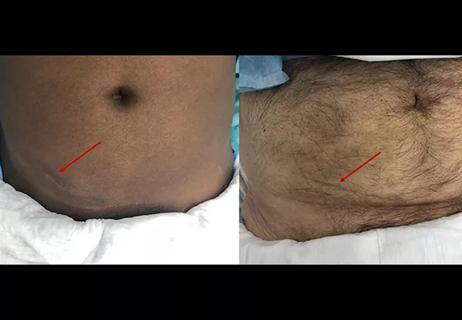The process could improve access for patients with end-stage kidney disease

In 2021, Cleveland Clinic performed 298 kidney transplants, up nearly 20% from the previous year. While the health system is the largest program in its region receiving referrals from Northeast Ohio and throughout the world, providers in the Glickman Urological & Kidney Institute strive to increase access to kidney transplant and, ultimately, improve outcomes for patients with kidney failure.
Advertisement
Cleveland Clinic is a non-profit academic medical center. Advertising on our site helps support our mission. We do not endorse non-Cleveland Clinic products or services. Policy
“We believe the best treatment modality for patients with kidney failure is transplantation,” says Anne Huml, MD, a nephrologist in the Urological & Kidney Institute. “Identifying patients early offers them the best opportunity to be evaluated for kidney transplant.”
Dr. Huml and Jesse Schold, PhD, a researcher in Cleveland Clinic’s Department of Quantitative Health Sciences, received a Caregiver Catalyst Grant from Cleveland Clinic’s Philanthropy Institute to develop an opt-out intervention for kidney transplant referral to improve access, promote timely evaluations, ascertain key barriers for evaluation and measure patient and provider perspectives on the process.
“The urgency by which patient identification and evaluation processes typically happen in practice is not always representative of what’s in the patient’s best interest,” says Dr. Schold. “We think that making these processes more efficient will improve the overall education and health outcomes.”
Nearly 786,000 people in the U.S. are living with end-stage kidney disease, according to the National Institute of Diabetes and Digestive and Kidney Diseases. However, only 29% of those receive a transplant. To receive a transplant, patients must be referred to a transplant center and undergo evaluation, including an initial intake visit, medical and psychological workup, and determination of waiting list candidacy.
The aim of the 12-month pilot study is two-fold:
1. Develop and automate electronic referrals for transplant evaluation into the electronic health record for patients at chronic kidney disease centers.
Advertisement
2. Empower patients by providing an outline of the transplant evaluation process and what to expect at center visits.
Drs. Huml and Schold plan to leverage an electronic platform to automate referrals from Cleveland Clinic chronic kidney disease clinics at various locations for patients who meet basic eligibility requirements, including a certain level of kidney function and no glaring contraindications to kidney transplant.
“By automating initial referrals and making this an opt-out rather than an opt-in process, we hope to provide more access and attenuate some of the inefficiencies that are in this very complex process to provide more efficient care, even if some patients are not ultimately viable for transplant,” says Dr. Schold.
The automated system will also track the progress of patients throughout the multi-step evaluation process.
“Oftentimes, patients drop off before being successfully evaluated,” says Dr. Huml. “We plan to devise interventions to help patients through this process based on barriers we find.” To discern barriers, Dr. Huml and Dr. Schold envision creating a dashboard of steps in the process and getting patient feedback at each step.
“Unless we understand the very specific, granular steps where delays exist, it’s hard to create interventions for those barriers,” says Dr. Schold.
Data collected will include the frequency of referrals triggered for patients, acceptance by providers, appointments scheduled, visits to the transplant center and transplant candidacy of those referred.
Advertisement
The second component of the project is patient education. “We hope to educate patients on what it means to get a kidney transplant referral and what to expect at their first visit to the transplant center,” says Dr. Huml.
The process can be lengthy, particularly if patients haven’t had the required medical and psychological workups prior to visiting the transplant center. Therefore, it’s important to involve patients in discussions early and ensure they understand the expectations and terminology.
Dr. Huml and Dr. Schold will design questionnaires to determine patients’ knowledge about kidney transplant before and after the intervention. They also plan to interview providers at the conclusion of the project to determine acceptability of the automated referral system.
Cleveland Clinic is well-suited for this study, which aims to enroll approximately 100 patients.
“We have a very large transplant population and an exceptional team of providers who value high quality of care,” says Dr. Schold. “I think there will be a lot of lessons learned not just for our program, but also ones to share with the transplant community.”
Advertisement
Advertisement

Enhanced visualization and dexterity enable safer, more precise procedures and lead to better patient outcomes

Insights on bringing Cleveland Clinic even closer to becoming the best transplant enterprise in the world

Minimally invasive approach, peri- and postoperative protocols reduce risk and recovery time for these rare, magnanimous two-time donors

Minimally invasive pancreas-kidney replacement reduces patient’s pain, expedites recovery

First-ever procedure restores patient’s health

Smaller incision may lead to reduced postoperative pain for some patients

Improving access to lifesaving kidney transplant

Infectious disease and kidney transplant specialists share key insights